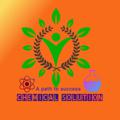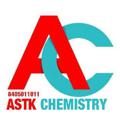Question 3 :
Among <img style='object-fit:contain' src="https://storage.googleapis.com/teachmint/question_assets/NEET/5ea7c966c2a2ae2953d94346"> , the <img style='object-fit:contain' src="https://storage.googleapis.com/teachmint/question_assets/NEET/5ea7c9666f3020298ca137f7"> has highest melting point because:
Question 4 :
<p>Some atoms attain their inert gas configuration by sharing of electrons. This method of attaining inert gas configuration is known as :</p>
Question 6 :
The bond order of <img style='object-fit:contain' src="https://storage.googleapis.com/teachmint/question_assets/NEET/5ea7c8e9c2a2ae2953d94236"> molecule on the basis of molecular orbital theory is:
Question 8 :
What are the conditions for a species to act as a donor and an acceptor during dative bond formation?
Question 10 :
One would expect the elemental form of <img style='object-fit:contain' src="https://storage.googleapis.com/teachmint/question_assets/NEET/5ea7c942ab3481716f4b70f9"> at room temperature to be:
Question 12 :
<img style='object-fit:contain' src="https://storage.googleapis.com/teachmint/question_assets/NEET/5ea7c8e5399925718ac6ab8b"> boils at higher temperature than <img style='object-fit:contain' src="https://storage.googleapis.com/teachmint/question_assets/NEET/5ea7c92a6f3020298ca1378a"> because it is capable of forming:
Question 13 :
The bond formed between the two atoms by mutual sharing of electrons so as to complete their octets or duplets gives :<br/>
Question 15 :
The covalent compound <img style='object-fit:contain' src="https://storage.googleapis.com/teachmint/question_assets/NEET/5ea7c902c2a2ae2953d94276"> has the polar character because:
Question 16 :
Which of the following has different hybridisation from other three species :-
Question 17 :
The number of electron pair shared between two atoms of same or different elements during its formation of molecules is known as :
Question 19 :
Which of the following compounds has dipole moment approximately equal to that of chlorobenzene?
Question 21 :
Formal charge at oxygen atom I, II and III<br><img style='object-fit:contain' src="https://storage.googleapis.com/teachmint/question_assets/NEET/5ef6d7d9180da34ba6ee438f"><br>
Question 22 :
Oxygen and sulphur both are the member of same group in Periodic Table but <img style='object-fit:contain' src="https://storage.googleapis.com/teachmint/question_assets/NEET/5ea7c8e5399925718ac6ab8b"> is liquid while <img style='object-fit:contain' src="https://storage.googleapis.com/teachmint/question_assets/NEET/5ea7c92a6f3020298ca1378a"> is gas because
Question 26 :
Magnetic nature of {tex} \mathrm { C } _ { 2 } {/tex} molecule will be:-
Question 28 :
Which of the following commonly forms ionic compounds as a $-1$ anion?
Question 30 :
A magnesium ion has a net positive charge while the magnesium atom has __________. 
Question 31 :
Number of electrons in a the valence orbit of nitrogen in an ammonia molecule is
Question 34 :
During the formation of ionic bond ________transfer takes place from one atom to the others.
Question 35 :
The value of bond order in nitrogen and oxygen molecule is:
Question 39 :
The structure of glycine (amino acid) is $H_{2}N-CH_{2}COO^{-}$ ($z$ witter ion). Select the correct statement:-
Question 44 :
All bond angles are exactly equal to <img style='object-fit:contain' src="https://storage.googleapis.com/teachmint/question_assets/NEET/5ea7c9376f3020298ca137a9"> in
Question 45 :
Atoms or group of atoms which are electrically charged are known as:




























